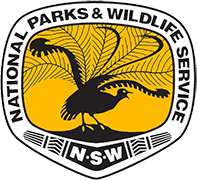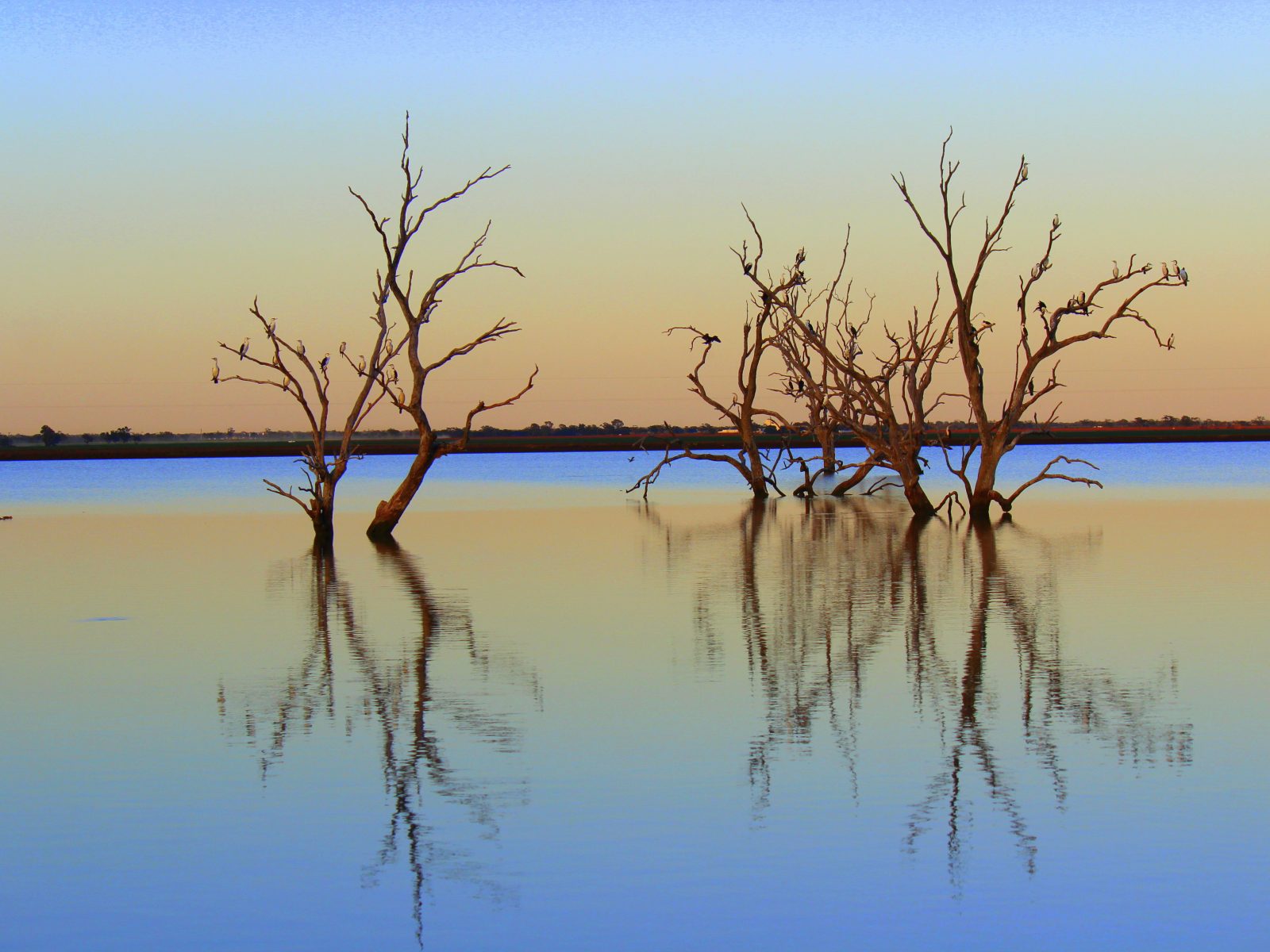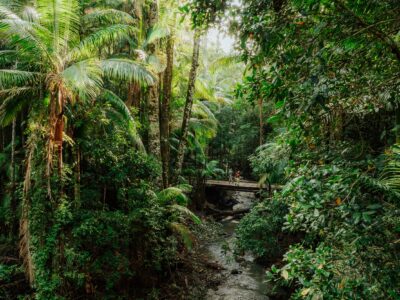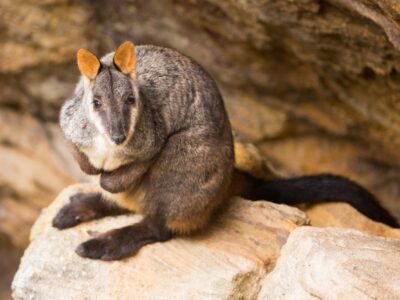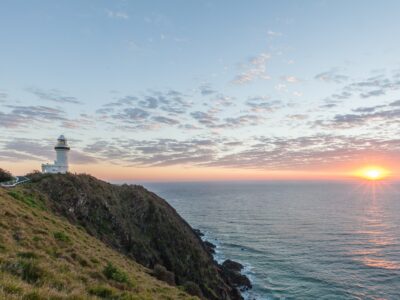Suddenly, red dirt gives way to fresh water. ‘Water? In the desert? It must be an illusion,’ you mumble. You bob your head from side to side, expecting the water to vanish as quickly as it appeared.
But there are sounds too. You start to hear frogs croaking in their hundreds. A kingfisher pierces the water and comes up with a wriggling catch. Kangaroos gather to drink at the water’s edge and brolgas dance in the shallows.
This is just one of over 20,000 essential wetlands in New South Wales. But what exactly is a wetland, and why are they so important?
-
What is a wetland?
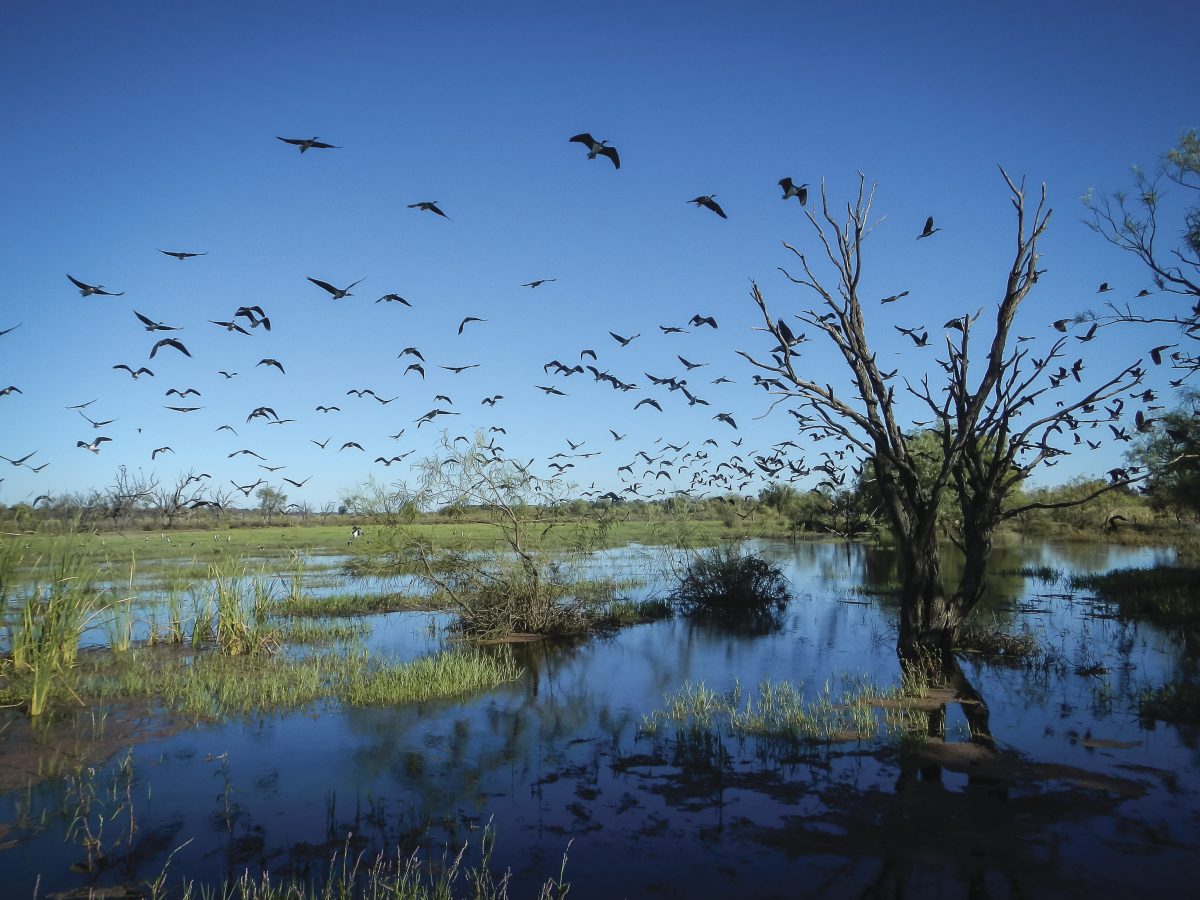 Photo Information
Photo InformationGwydir Wetlands
Jennifer Spencer / DPIE
It’s in the name! Wetlands are areas of land that are covered by or soaked with water, they’re wet land.
The water can be fresh, salty or brackish (a bit salty) and it can be still or slowly moving. Most importantly, it doesn’t have to be there all the time – as long as it floods or saturates sometimes, whether regularly or randomly, it’s possible an area qualifies as a wetland.
The key defining feature is adaptation. Wetland environments feature species that are adapted to, or even rely upon, these wet conditions. In particular plant species in wetlands are often adapted to the unique ‘hydric soil’ and must be able to survive in wet soil where oxygen is difficult to acquire.
Wetlands might appear as mangroves, mudflats, bogs, billabongs, lakes, lagoons, even reefs and peatland. It’s even possible for wetlands to be man-made or exist underground.
-
Why are wetlands so important?
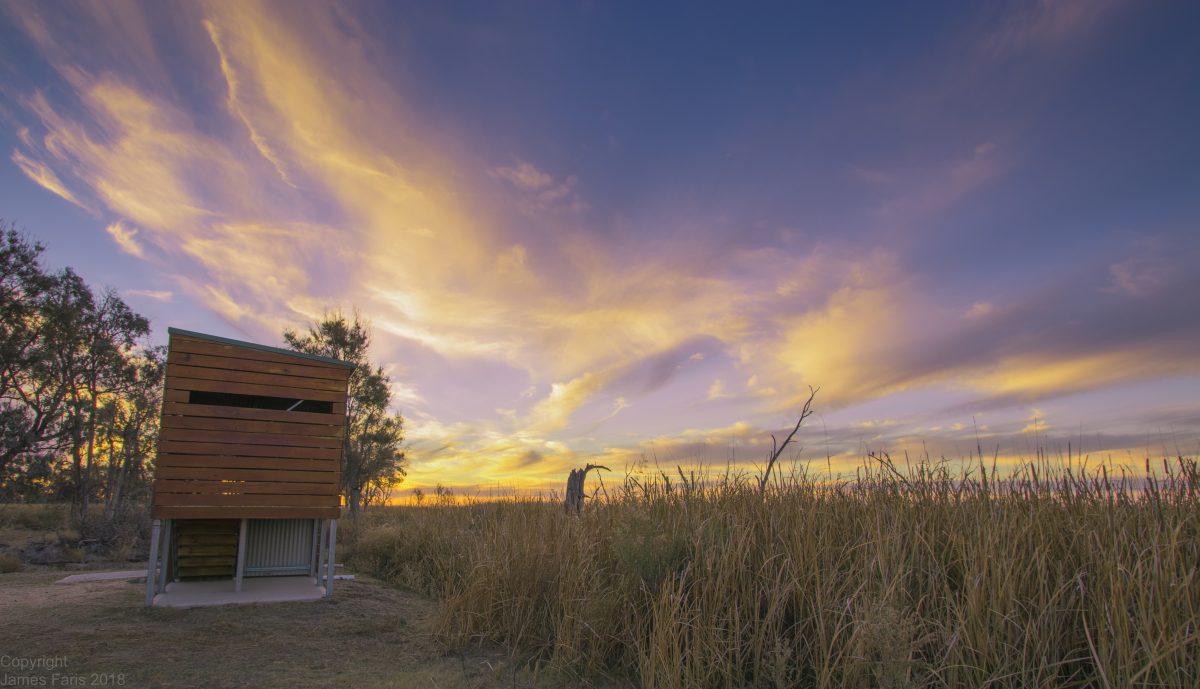 Photo Information
Photo InformationBirdhide
Gwydir Wetlands State Conservation Area
James Faris / DPIE
Wetlands are biodiversity hotspots and their ecosystem productivity is comparable to coral reefs and rainforests! They’re also a vital part of the life cycle for many species. But their impact goes far deeper, with environmental, economic and cultural implications.
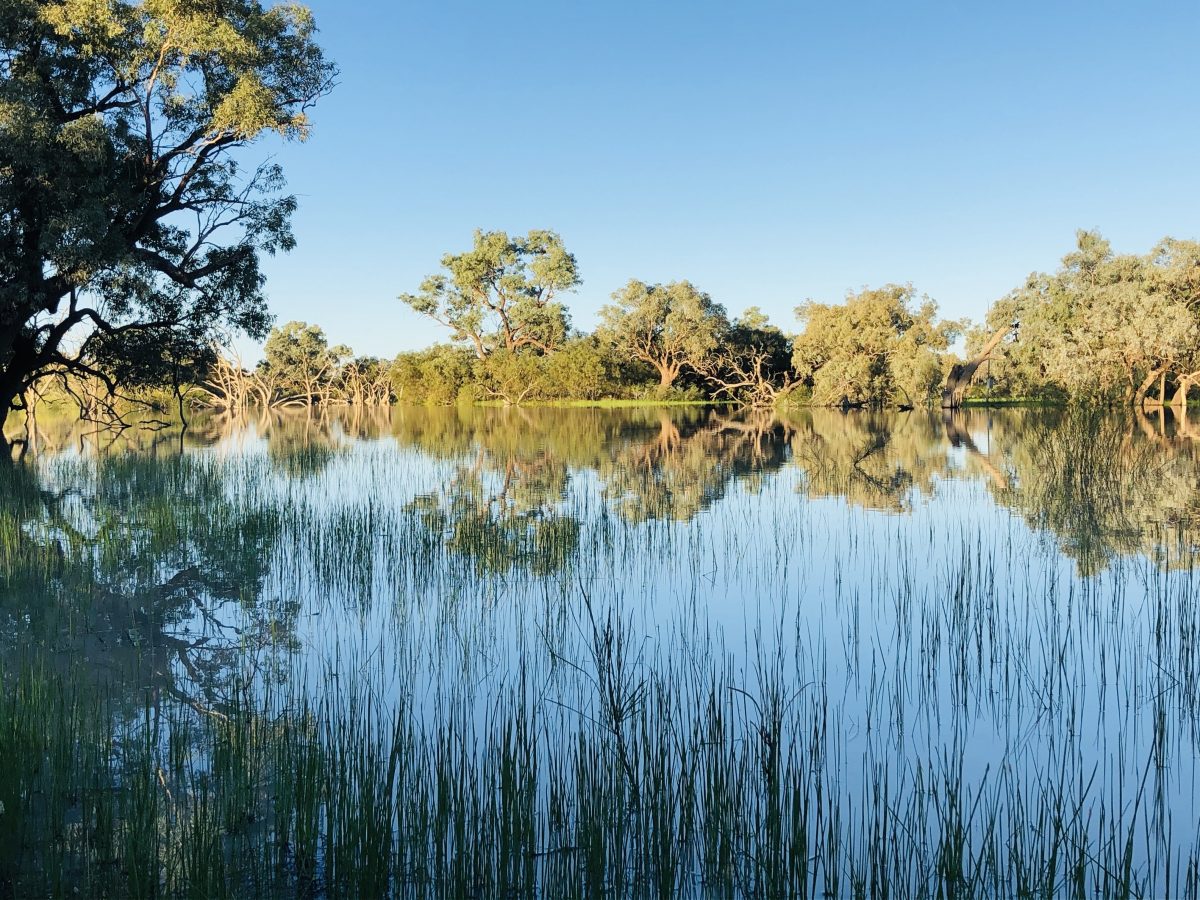 Photo Information
Photo InformationWarrego wetland (Wairiku Pulka) walk and picnic area
Toorale National Park
Melissa Hams / DPIE
Wetlands help manage flooding by giving floodwaters a place to go and slowing them down, leading to more even flow through rivers over time. In some cases this storage effect stores drinking water and releases it slowly, the hanging swamps in Blue Mountains National Park near Sydney are a great example of this.
Speaking of clean water, wetlands are excellent at filtering and cleaning water. They trap sediments, absorb excess nutrients and remove other pollutants. Without wetlands, water quality suffers and floodwaters rush downstream, damaging the environment and our agricultural industries.
Our fisheries benefit from healthy wetlands too. Many valuable species of fish and crustaceans are born in rich wetland environments, which also act as a great place to nurture young species. Without healthy wetlands numbers of native fish species such as Golden perch, Bony bream and Australian smelt would suffer, as well as crustaceans including yabbies, blue swimmer crabs and Eastern king prawns.

Photo InformationBirdlife – Grey Teal
Mid Murray River
John Spencer / DPIE

Photo InformationBirdlife – Sharp-tailed Sandpiper
Macquarie Marshes Nature Reserve
Nicola Brookhouse / DPIE

Photo InformationBirdlife – Black winged stilt
Mid Murray River
John Spencer / DPIE
Birds also breed in wetlands and mass breeding events can occur after flooding. Strong bird numbers are great for farmers as large bird populations control pest species and help reduce the need for pesticides.
We could go on but you get the idea. Healthy wetlands give so much back to the environment and it’s essential that we protect them. So what are those protections and where in NSW can significant wetland environments be found?
-
Ramsar Wetlands – Wetlands of International Significance
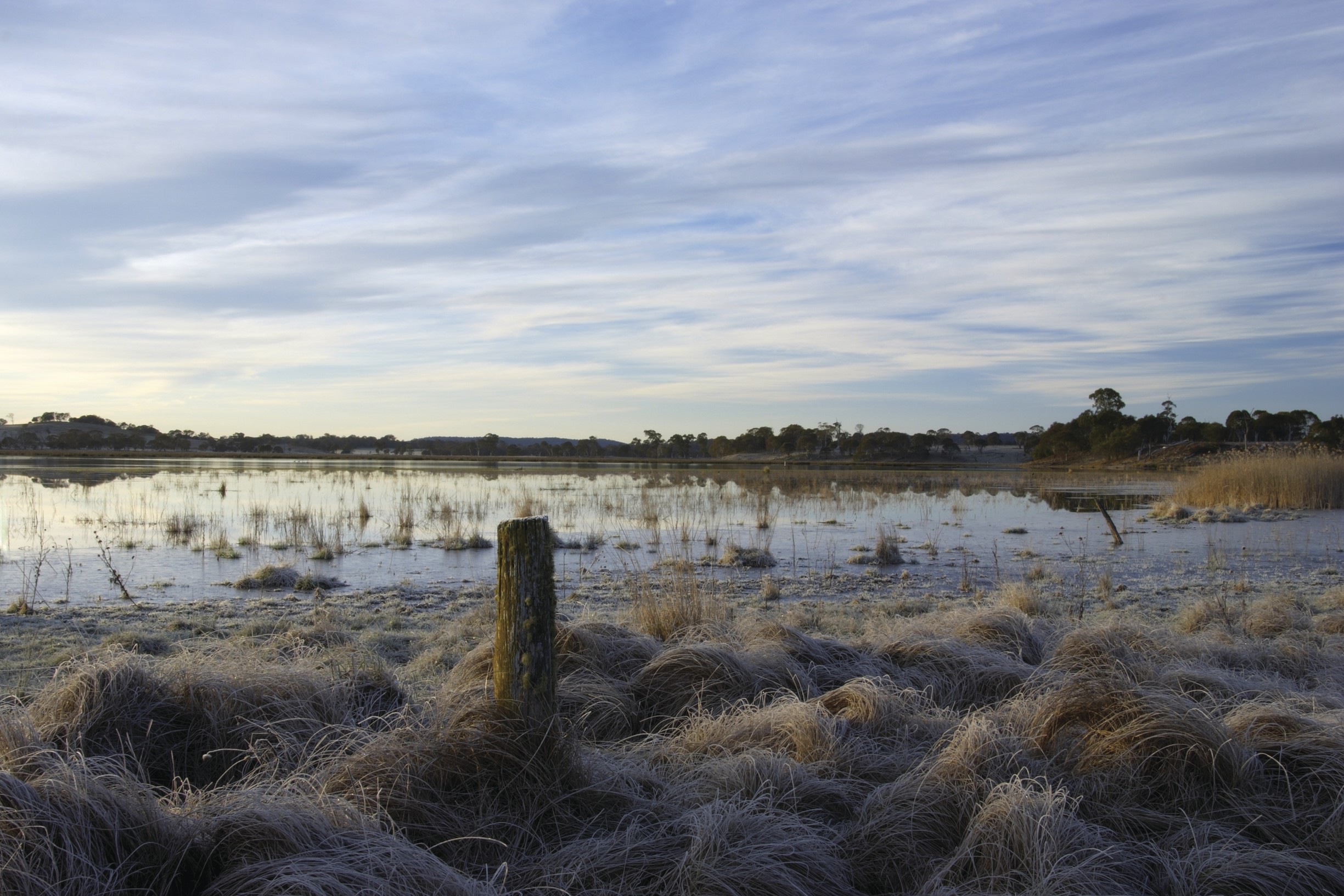 Photo Information
Photo InformationLittle Llangothlin Nature Reserve, RAMSAR Site its grasses provide a habitat for a number of species listed as vulnerable or endangered in NSW
Little Llangothlin Nature Reserve
Shane Ruming / DPIE
Wetlands have their own version of World Heritage listing called the Ramsar Convention on Wetlands. Named after an Iranian city called ‘Ramsar’ in 1971 who first put it into action, the convention has a mission to promote the conservation and wise use of all wetlands using local, national and international actions, to work towards sustainable development.
Australia has 66 Ramsar listed wetlands and 12 of them are in New South Wales! The sites are managed across national parks and nature reserves which take into account their varied needs and land ownership.
The best part? You can visit these wetlands to see them for yourself and there’s so much variety.
Paroo River Wetlands
Paroo-Darling National Park
View this post on InstagramWay out west, the Paroo River is the last free flowing river in the Murray–Darling Basin, and part of this wetland complex is home to the famous Peery Lake.
The Ramsar-listed lake isn’t always there however, it had lain dry for 10 years until recently, when rains transformed it into a hub of native birdlife such as pink cockatoos and red-backed kingfishers, as well as migratory birdlife and wildflowers.
Peery Lake is also known for its impressive mound springs, volcanic-shaped structures formed from water seeping up from the Great Artesian Basin through faults in the ground. This unique process hosts species like the Salt Pipewort, which relies on the rare mound spring environment to survive.
Myall Lakes
Myall Lakes National Park
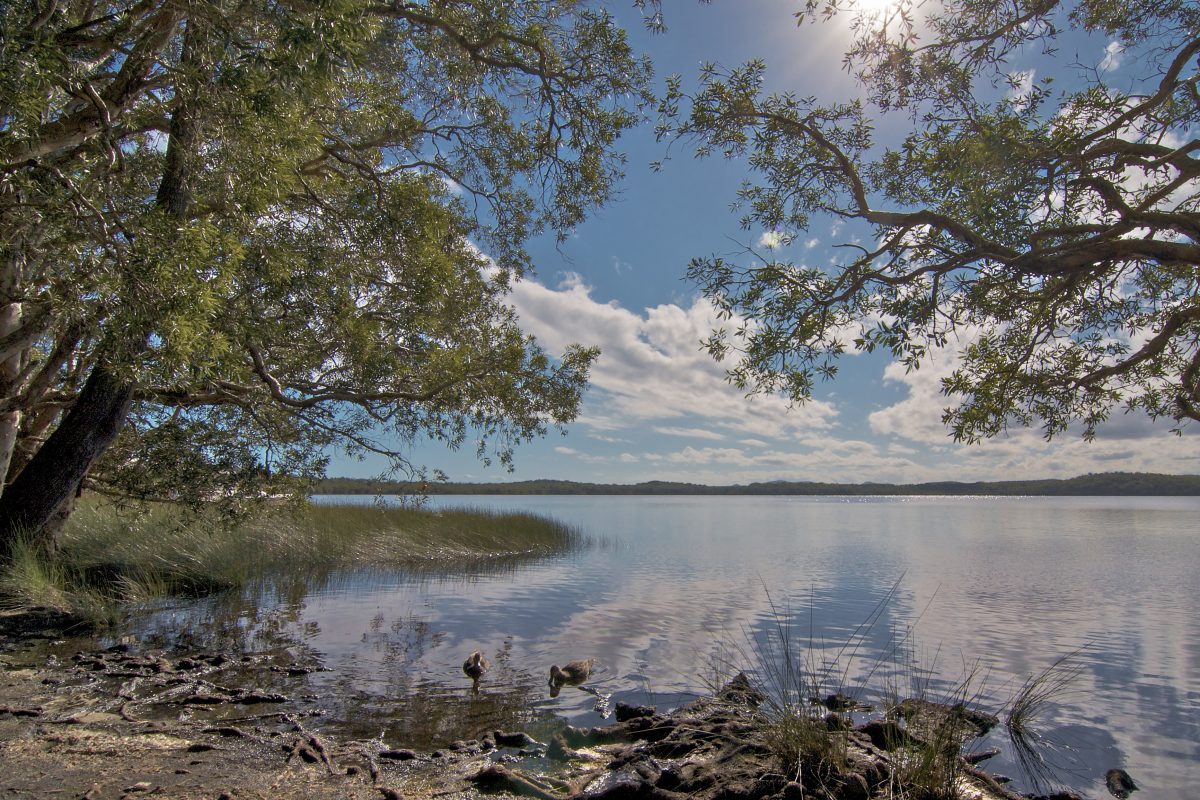 Photo Information
Photo InformationJohnsons Beach campground
Myall Lakes National Park
John Spencer / DPIE
In contrast to Peery Lake, Myall Lakes are permanent wetlands with salty and brackish water as freshwater meets the ocean. A huge range of environments can be found here including mangrove and casuarina forest, sand dunes 50 metres high, mudflats, seagrass forests and brackish swamps.
Myall Lakes was listed as a Ramsar site in 1999 due to its biodiversity and how well it has escaped human harm. The variety of environments within the national park means Myall Lakes is home to over 968 species of plant, 400 animal species, and many endangered animals including the Australasian bittern.
Did you know? The Worimi people gathered for at least the last 4000 years in this area. A visit to Dark Point Aboriginal Place is a privilege and well worth your time.
The hardest thing about exploring Myall Lakes National park is knowing where to start! Luckily, with over 20 campgrounds it’s easy to stay the night and catch it all. Don’t miss the Mungo walking track which features up to 21km of rambling through coastal rainforest. Lucky you can tackle it on your mountain bike!
But most importantly, pack your kayak, canoe or SUP (stand up paddle board)! Myall Lakes National Park is all about the lake, so get out and enjoy it!
A day out on the water? Read our water safety tips to help you and your crew have a fun and safe time in and around water.
Blue Lake
Kosciuszko National Park
View this post on InstagramBlue Lake and Hedley Tarn downstream have been protected within Kosciuszko National Park for half a century and have avoided the impact that many wetlands face, leaving them in near pristine condition.
This is particularly lucky as Blue Lake is quite unique. It’s one of only four cirque lakes in Australia.
You can look down on Blue Lake from Blue Lake lookout, perched above Blue Lake on the Main Range walk, a stunning 22km loop track that climbs to the top of Australia, Mt Kosciuszko. Keep an eye out for the rare species that flourish here including snow buttercups, Kosciuszko pineapple-grass and, if you’re really lucky, a Guthega Skink or an Alpine She-Oak Skink.
What’s a Cirque Lake? Cirque lakes like Blue Lake are formed by glacial erosion from a time when Australia was far colder: the last Great Ice Age over 10,000 years ago! The rocky amphitheatre-like shape is formed as the glacier moves downhill, often leaving behind a depression that fills with water and becomes a lake.
-
Nationally Significant Protected Wetlands
Photo InformationThere can only be so many Ramsar-listed wetlands, but there are many more precious nationally significant wetlands in NSW that are worth protecting. In some cases parks and reserves have even been established to protect wetland areas. Roll the highlights reel!
Lake Cudgen is just south of Tweed Heads in Cudgen Nature Reserve and it’s a brilliant example of a wetland environment worth protecting. With the spirey Wollumbin (Mount Warning) as a backdrop, the lake is surrounded by floodplain forest and rainforest, fed with waters that run from the ancient escarpment to the west.
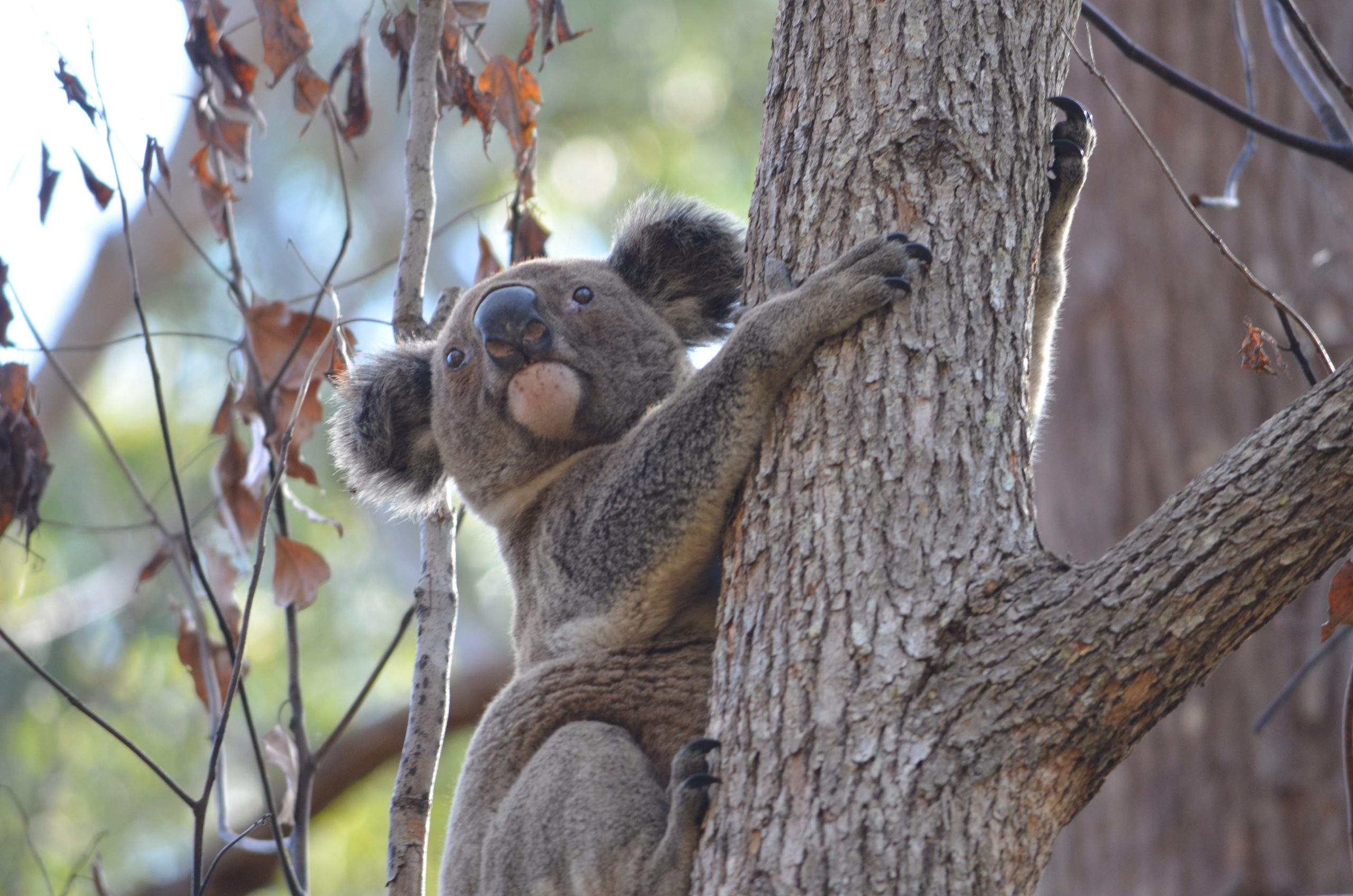 Photo Information
Photo InformationIf you’re lucky you might just spot a Koala in the wild.
Scott Hetherington / DPIE
Motorised watersports aren’t allowed on Lake Cudgen to protect bird species like the white-faced heron or Australasian grebe, making it a haven for paddling, fishing and even sailing. Keep your eyes on the trees too, especially around Round Mountain in the south, some of the Tweed Coast’s last remaining koala population call this stunning reserve home.
View this post on InstagramHead on inland to the Mother of Ducks Lagoon Nature Reserve near Armidale, it’s an absolute must for twitchers (that’s what birdwatchers called themselves). The rare montane wetland environment is a breeding spot for some rare wetland bird species as well as migratory birds like the Japanese Snipe, which flies back to Japan every April.

Photo InformationTala Lake Lowbidgee floodplain
James Maguire / DPIE

Photo InformationYanga Lake
David Finnegan / DPIE
Close to the Victorian border, Yanga National Park, includes the Lower Murrumbidgee Floodplain, an important waterbird breeding site, as well as the largest continuous tract of river red gum forest in the world and middens, scarred trees and historic sites significant to the Muthi Muthi Traditional Owners.
By now you’re probably realising just how blessed NSW is with precious, varied and unique wetland environments. If you’re lucky enough to visit one of the wetlands that NSW National Parks manages make sure you tread carefully and move quietly to experience the environment in its natural state.
Oh, and whatever you do, don’t forget your binoculars!
